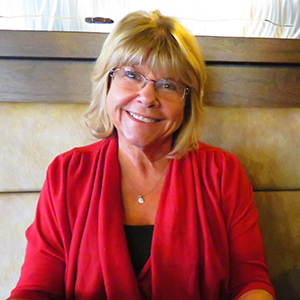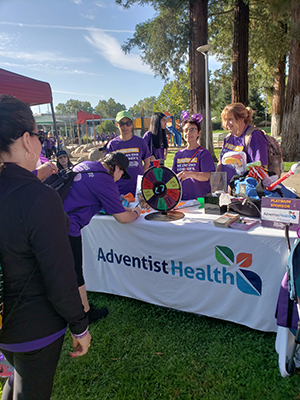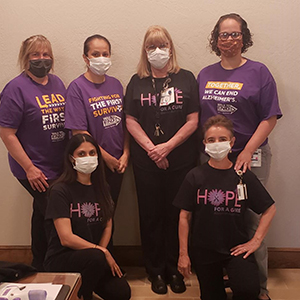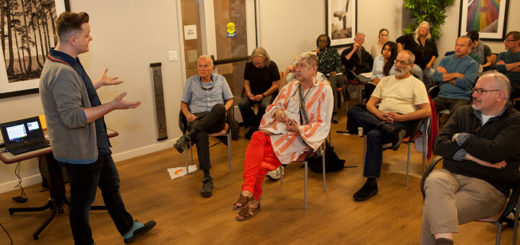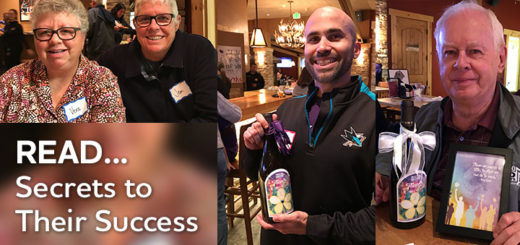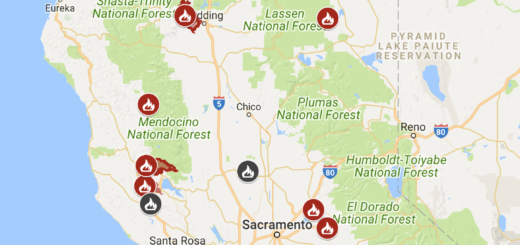Yuba City walker spends 20 years raising funds to #ENDALZ
Miscommunication about a job opening led Carol Pickard to a career in the senior care industry. Seeing the impact of Alzheimer’s on older adults first-hand, Carol began participating in Walk to End Alzheimer’s® to help raise funds for research, care and support. Now the event chair for the Yuba City Walk to End Alzheimer’s, Carol remains committed to doing her part to help researchers find a way to end Alzheimer’s.
Misunderstanding about a job opening
Carol Pickard was fresh out of college, looking for a job, when a friend of hers asked if she wanted to work at a senior center. At the time, Carol’s dream was to work at a community college. Assuming her friend meant high school seniors, Carol agreed to the interview.
However, Carol was surprised to learn that it was a senior center for the elderly and even more surprised when she was hired. “After I started, I realized in days that I had been preparing my whole life to work with seniors,” Carol said. “My parents were older when I was born, and I always preferred to be around elders. It was very serendipitous.”
Understanding dementia
In the beginning of Carol’s career, she didn’t work with people who had memory problems. The first time she met someone living with dementia, it had a powerful impact on her. “I was at a Christmas dinner at the senior center and the gentleman next to me had the most beautiful baritone voice. His wife was next to him crying.
“I asked her if she was okay, and she told me that her husband hadn’t spoken in three years. She told me that singing carols had allowed her to hear his voice again. We both cried.”
Carol learned how music can comfort someone living with Alzheimer’s or another dementia and bring back old memories. It reinforced her belief that you should make every moment matter, especially when it comes to those living with the disease.
Carol says, “If you had a bad day with them today, don’t worry. Tomorrow you’re going to make a moment matter.”
Eventually, Carol grew to realize that her grandmother had showed signs of dementia. “I went to visit her in Indiana,” said Carol. “Every morning we’d wake up and she would say, “˜Oh my gosh you’re here!’ and show me to my room. I was confused at the time but looking back, I can see she had dementia.”
Finding a reason to fight for a cure
Carol, who has been in the senior care industry for more than 24 years, has been participating in Walk to End Alzheimer’s almost as long. In 1999, Carol was working at an assisted living facility when a well-respected doctor at the time came to speak.
“He said, “˜There will never be a cure in your lifetime, certainly not in your children’s lifetime and probably not in your grandkid’s lifetime,'” said Carol. “I walked away from that and said I’m not going to accept that.”
Carol, who already knew about the Alzheimer’s Association®, decided it was time to do something about this disease. She signed up for the Fresno Walk to End Alzheimer’s. As it was one of the first Walks in Fresno, there were only a small number of people who attended, but Carol knew they could still have a big impact on the disease.
Five years later, Carol was transferred to Santa Cruz, where she became a member of the Alzheimer’s Association’s advisory group there. She also became more involved with the Santa Cruz Walk to End Alzheimer’s.
“I got involved with setting up the Walk and working on logistics,” said Carol. “I got a feel for what the Association was doing and what they do for people. It’s not just support groups, it’s also research and advocacy. They’re working hard to find a cure.”
Watching Walk grow
Over the next several years Carol traveled to different care settings, helping out where she was needed. She continued to participate in different Walk to End Alzheimer’s events wherever she was living.
Carol has watched the movement grow to be hundreds of people, in bigger spaces, with more fanfare. “Everyone has a common purpose no matter our differences,” says Carol. “Sometimes you feel like an island, but the people there are equally as passionate about it. It makes you believe in people again.”
The white flower
In 2016 Carol became tired of traveling for work and found her dream job in a non-profit hospital in Yuba City that had both assisted living and memory care. Naturally, she found her local Walk and signed up to participate in the Yuba City Walk to End Alzheimer’s. That was the year Carol saw the white flower for the first time.
Every Walk across the country has a Promise Garden. The Promise Garden signifies the Alzheimer’s Association’s solidarity in the fight against the disease. The colors of the Promise Garden Flowers represent participants’ connection to Alzheimer’s “” their reasons to end the disease.
- Blue: Someone living with Alzheimer’s or dementia.
- Purple: An individual who has lost someone to the disease.
- Yellow: A person who is currently supporting or caring for someone living with Alzheimer’s.
- Orange: A participant who supports the cause and the Association’s vision of a world without Alzheimer’s and other dementia.
The white Promise Garden Flower represents the hope for the first survivor of Alzheimer’s disease and the progress being made through participating in events such as Walk to End Alzheimer’s.
“I saw that flower and I had to go to my car and cry,” said Carol. “I can hardly talk about it. I thought, “˜There you go doctor! A cure may happen in my lifetime, and I’m certain it will happen in my children’s lifetime.'”
Becoming the committee chair
The following year, in 2017, Carol decided to join the planning committee. She helped out where she was needed until this year, when she was asked to be the event chair.
Due to the pandemic, many volunteers took a step back, leaving the Yuba City Walk committee with very few members. “At first I thought I couldn’t do this, but then I thought, “˜just step up,'” said Carol.
“Now, we’re very close to hitting our sponsorship goal. We’re chipping away at our participant goal.”
Alzheimer’s prevalence continues to grow
According to the Alzheimer’s Association 2021 Alzheimer’s Disease Facts and Figures One in nine people age 65 or older are living with Alzheimer’s dementia in 2021. Seventy-two percent are age 75 or older.
Carol sees first-hand the growing prevalence of Alzheimer’s and other dementias in her work. “When I first started talking about Alzheimer’s disease there were 4 million people living with the disease. Now there are more than 6 million,” said Carol.
“You probably know someone who is living with Alzheimer’s. It could be someone at church or your grandma. We need people to help, and we need people to care.”
Funding research
All funds raised through Walk to End Alzheimer’s advance the care, support and research efforts of the Alzheimer’s Association. For Carol, it’s all about research, and what the Alzheimer’s Association can do to find a cure.
“I’ve sat by hundreds of people’s bedsides as they passed,” said Carol. “I’m tired of watching it. I have to do my little bit to help, so that’s what I’ve been doing. People ask me what’s on my bucket list? I have one thing; I want to see the cure.
“There are many organizations that can offer support groups, but there is no one in the world that does research like the Alzheimer’s Association. The new medication [Aduhelm™] gave me a lot of hope.”
A joyful day
Carol loves to watch the Promise Garden Ceremony as each flower is presented and each person, no matter their connection to the disease, is honored. At the Yuba City Walk, she specifically loves to see how much fun participants have on Walk day.
“I love the costumes,” said Carol. “I have purple and white striped socks. It’s a fun day with so much enthusiasm. I feel that after this last year with COVID and all of the issues the world has faced, it’ll be nice for people to get together and happily do something for an organization that they’re proud to be a part of. It’s going to be a joyful day.”
You can join Carol’s team, Adventist Health + Rideout, or form your own team and join us for the Yuba City Walk to End Alzheimer’s on September 11, 2021 at Gauche Park. Not in Yuba City? Find a walk near you at alz.org/walk
Learn more:





